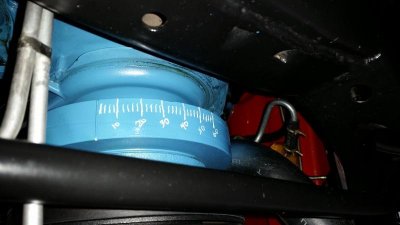idrivemopar
Well-Known Member
Does anyone make a stencil that can be used to paint on timing marks? Would be nice to have some sort of stick on stencil that you could then paint over peel and have painted on timing marks.
In my opinion, Tape is worthless, lost my 3rd one today, and I even took extra time cleaning the balancer, applied the tape and clear coated and let dry, but it flew off in less than 20 miles, lol, so I am done with that crap.
Would be nice to have a marked balancer, but those are not cheap, so looking for a low tech approach here.
In my opinion, Tape is worthless, lost my 3rd one today, and I even took extra time cleaning the balancer, applied the tape and clear coated and let dry, but it flew off in less than 20 miles, lol, so I am done with that crap.
Would be nice to have a marked balancer, but those are not cheap, so looking for a low tech approach here.

















